If you’ve visited Italy, you’ll know that olive trees are in abundance and many countryside properties for sale have them. Some of these trees are thousands of years old, yet those twisted old trunks and branches still produce superb extra virgin olive oil.
There is something special about celebrating family holidays in an Italian olive grove. They offer privacy and the opportunity to enjoy the great outdoors. You may also consider buying a property with friends where you can get together to experience olive picking and witness your precious olives pressed into olive oil.
Interested in buying a property with family? You can split the cost and double the fun! Download our free guide for more information.
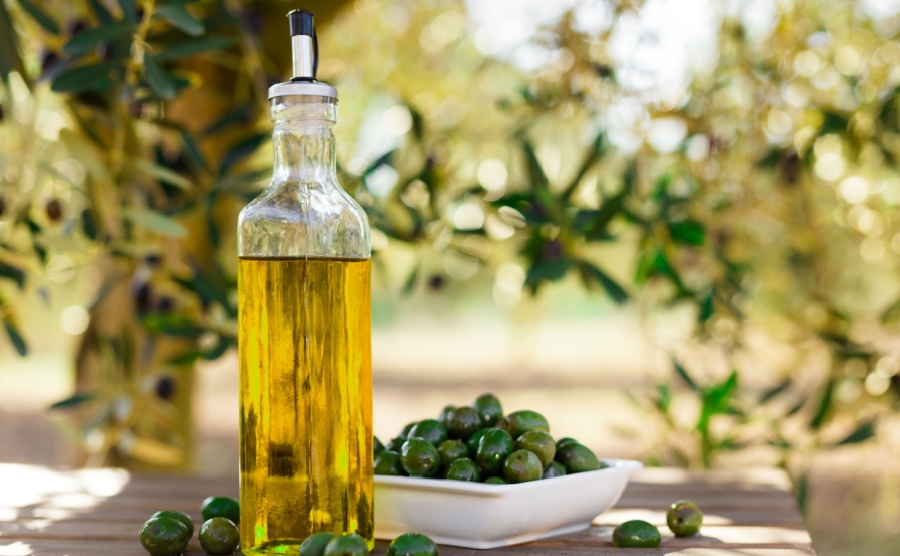
Olive oil is a precious commodity in Italy
Find homes in Italy via our property portal.
Olive oil prices
Italy is the largest consumer of olive oil. On average each Italian consumes over eight litres per year. In 2024, the average price per litre, in Italy, is around €6.20, representing a 5% increase compared to 2023.
There are, of course, regional variations. Tuscany and Puglia, known for their high-quality olive oil, often command higher prices than other regions. You’ll also note that top supermarket brands can be more expensive than buying from your local cooperative olive press.
According to the Conad site, a supermarket chain in Italy, the cheapest one-litre Extra Virgin Olive Oil bottle in late September 2024, was €8.82. In Tesco UK, it was €10 (£8.40). One litre of the branded Filippo Berio 100% Italian Extra Virgin Olive Oil costs €11.30 in Italy, and €18.58 (£15.60) in the UK. That’s import costs for you.
The European Commission’s olive oil dashboard keeps track of olive oil prices. In June 2024, Italy’s Extra Virgin Oil stood at 940.3 €/100 kg. Reflecting a huge increase of 33% on the year before.
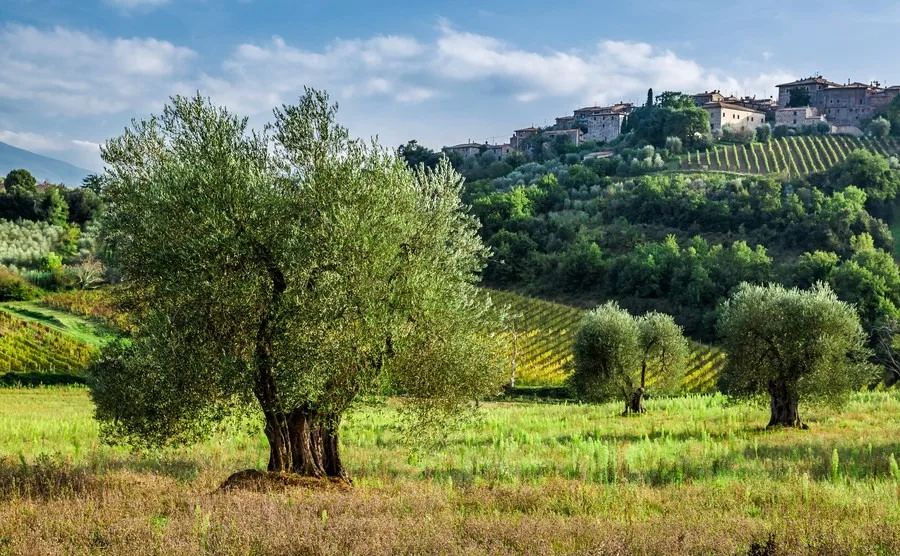
Tuscan olive groves
Olive grove prices
Prices vary greatly, depending on the region, condition of the trees, soil and productivity. Prices are generally calculated per hectare. In Tuscany, prices range between €20 to €80 per hectare, in Puglia prices on average range from €8 to €28. Although, the irrigated olive groves of Andria can cost as much as €56. It is the DOP groves of Lombardy which are among the most expensive.
DOP is an acronym which translates to “Protected Designation of Origin”. Therefore, DOP groves often produce the best results.
Some olive groves will have a small building that may have been used for storing farm equipment. In Puglia, such a building with 10,000 square metres of olive grove can cost as little as €13,000. A simple villa used as a basic family weekend escape, can cost as little as 65,000 with some olive trees. Many of these properties require renovation. Such as this trullo with two hectares in Puglia, costing just €98,000.
Alternatively, you might find a refurbished farmhouse with its own vineyard and olive trees. The one pictured above has a starting price of €450,000. Why not browse properties in Barga today?
Viewing trip questions
When viewing a property with olive trees, there will be additional questions you will want to ask the current owner. Such as:
- How do you maintain the land and trees? e.g. ploughing and pruning.
- Do you get an EU subsidy?
- Are the trees healthy?
- How do you pick the olives?
- Where do you get the olives pressed?
- How much olive oil do you get each year?
- Are you expecting a good crop this year?
- What variety of olives are being grown?
- Is there a tax to pay on the land?
The Cadastra plans of property plots can be extremely useful as they should show the property’s boundaries. However, the plans may divide it into several parcels of land with separate numbers. You will want to be clear about which parcels are registered as agricultural use and which are for residential use. Any ideas you have about extending the property or building a pool may be affected by this designation, especially if it involves removing trees.
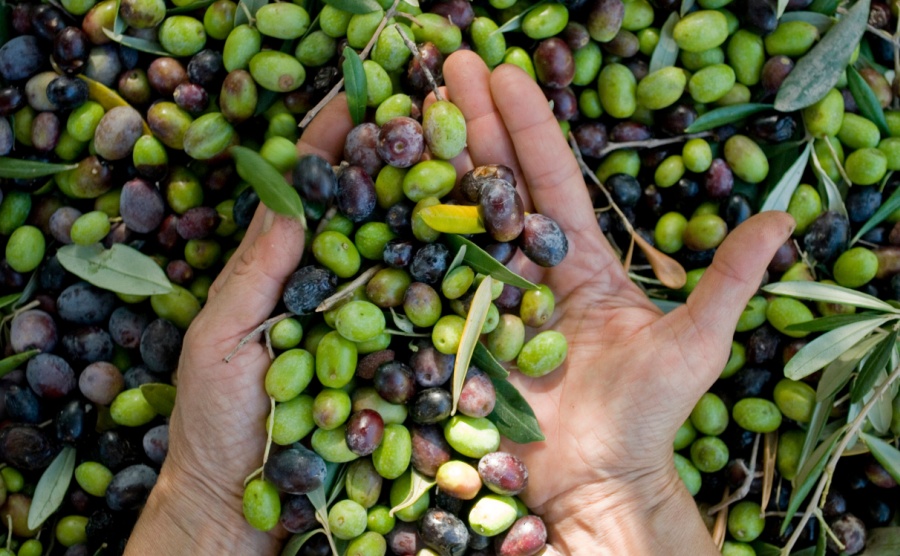
Taggiasca variety olives, picked in autumn
Olive varieties
There are reportedly between 400 and 500 types of olives for oil in Italy. You’ll discover different ones, depending on which region you are in. Among the most common in Puglia are the Coratina and Leccino, in Liguria, it is mostly the Taggiasca. However, on the island of Sicily, the distinct fruity-tasting oil comes from the Biancolilla. Tuscany is thought to produce the best quality oil, using famous cultivars Frantoio, Moraiolo and Leccino.
Production
Italy is the second largest producer and exporter of olive oil in the world after Spain, with a 21% share of the market (2023 Statista). The productivity of individual olive groves can vary each year depending on the weather, when they were last pruned, and their natural cycle.
Organic Olive Groves
In Italy, the percentage of olive groves dedicated to organic production is relatively high (21%), and organic olive farms cover an area of 243,089 hectares. In Spain, it represents 10%, but Spain does have the largest surface area of organic olive groves (262,379 hectares), Greece (58,840 hectares), Turkey (56,014 hectares), and Portugal (25,633 hectares).
If herbicides and pesticides have been used on the land you are buying, this might soak down into the water table. Some countryside properties have artesian wells that draw water from deep underground and pump it up to the taps and showers. While you can get this water tested, and it is generally of good quality, the laboratory analyst won’t guarantee you can drink it, as they point out that environmental issues can be different from day to day.
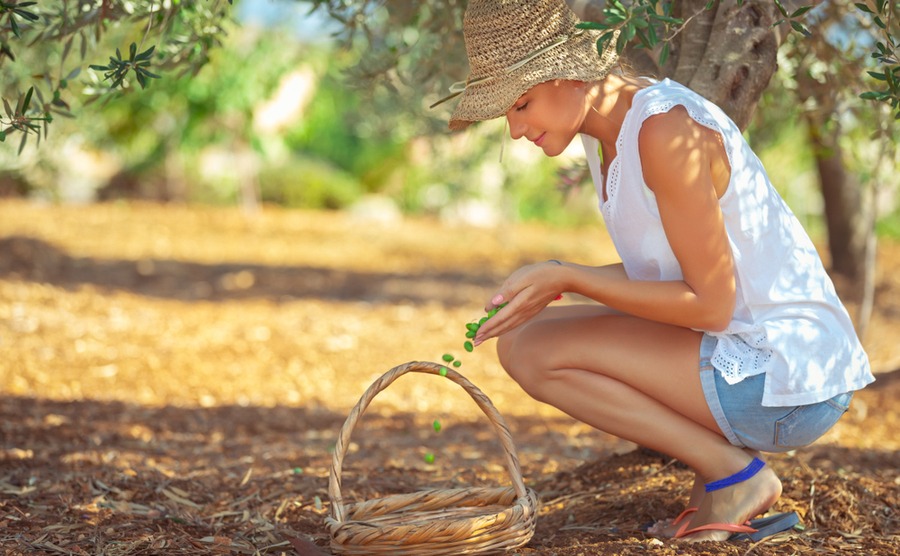
Many British buyers here in Italy have a smallholding growing veg for themselves and as a sideline. The more ambitious ones take on olive groves and the like!
Do the trees look green and healthy?
Olive trees are evergreen. If there are large parts of the tree that are brown and shrivelled it could be a sign of disease. “Xylella fastidiosa” was discovered on olive trees in Puglia, southern Italy, in October 2013. This was the first time the bacterium was reported in the European Union. However, it has since been reported in France, Spain, and Portugal.
It has been very upsetting for families to see old groves that have been cared for by their ancestors for centuries, die on their watch. There is currently no cure. When you drive through the areas affected, it is very sad to see big trees, so dry and leafless, that they look like a fire has swept through them.
What is Xylella Fastidiosa?
Xylella fastidiosa is a bacterial plant disease that’s transmitted by insect vectors. Visible signs that an olive tree is infected are the drying out of the leaves and branches. Eventually, they can completely dry out and die.
The main vector insect is thought to be the spittlebug (Philaenus spumarius). Xylella fastidiosa has a wide range of host plants, including many common cultivated and wild plants. To help restrict the spread of the vector, you should plough the land around olive trees and keep it weed-free.
Containment
The local authorities have tried various containment measures, from destroying infected trees to creating buffer zones and using insecticides. But the containment area keeps growing. More research needs to be done to a) prevent trees from being infected, and b) to discover a cure.
Resistant trees
Some types of olive trees appear to be resilient to Xylella. So, farmers are replanting and grafting trees using these varieties. The four olive cultivars that demonstrate high resistance to Xylella fastidiosa are Leccino, Lecciana, FS17 and Leccio del Corno. Although they are resistant and tolerant they aren’t immune.
Farmers’ and producers’ organizations in Italy, such as Coldiretti, Unaprol and Cai Consorzi Agrari d’Italia have launched a project to assist olive growers in replanting Xylella-resistant varieties. The goal is to plant about three million new olive trees.
Surveillance
The surveillance program conducted by the Puglia Region, analyses and monitors the population of vector insects, such as spittlebugs, which are thought to be responsible for spreading the bacteria.
Save the Olive Trees
As the owner of a Masseria in Puglia, with olive trees on her land, Helen Mirren has become a voice in the campaign to “Save the olive trees”. She has made videos and spoken at events to raise awareness.
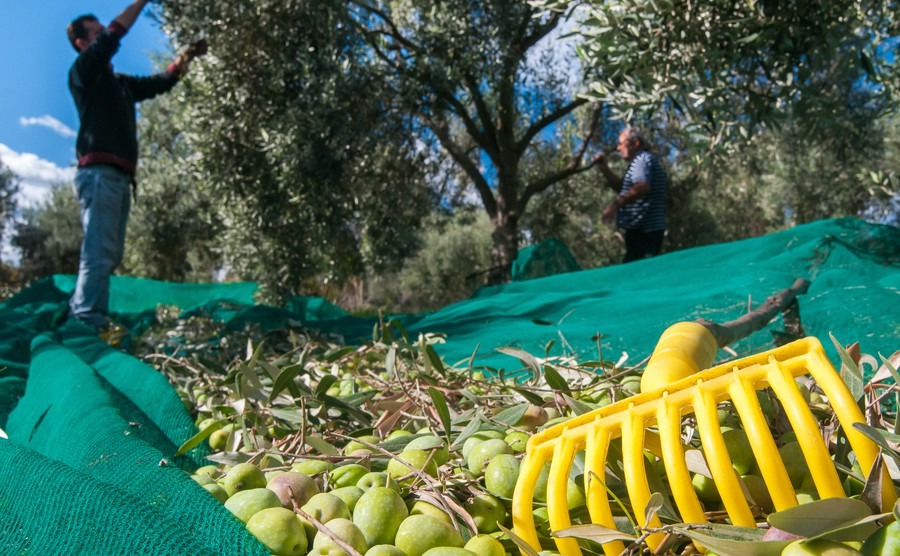
Just-picked olives on the net and pickers
Olive Oil tourism
A growing area of tourism in Italy is holidays based around a cultural “Experience”. Food and wine-themed holidays are already very popular. However, tourists are now also venturing into the olive groves and olive presses. These olive oil-themed holidays, are becoming known as “Oleo Tourism”.
These holidays might include tastings, workshops, and guided tours in museums, olive groves and oil mills. The perfect end to an olive-themed day is a meal at an Italian restaurant, with a menu that celebrates the local olive oil. Many towns and villages also hold Festivals to celebrate their local produce. At these events, you can often taste and buy wine, cheese, and olive oil.
Olive Oil Tours
Italian food and wine attract many foodies to holiday in Italy. Italian recipes often rely on fresh local ingredients and a good olive oil. Locally grown olives are thought to produce the best oil to complement local dishes. If you buy a property that you plan to rent to tourists, a nearby olive oil tour may be of interest to your guests. If you own a farmhouse with olive trees you might also decide to offer your guests oil from your own trees.
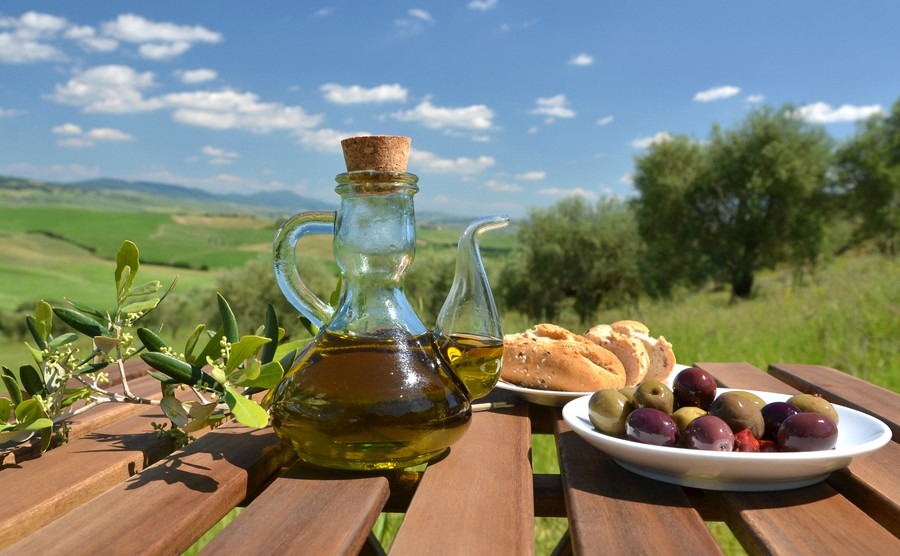
For those with olive groves, perhaps offering a tasting session could bring tourists to your area.
Agritourism
If you buy a large Italian farmhouse, you may consider boosting your income by running it as an “Agriturismo”. Agritourism activities in Italy typically refer to a farmhouse or rural estate that offers accommodation to guests. Agriturismos provide visitors with the opportunity to experience Italian countryside life, often allowing them to take part in agricultural activities such as olive harvesting.
When planning a viewing trip to Italy, booking a stay at an Agriturismo can be very interesting. You will see what life is like in the countryside and gain local knowledge from your hosts.
Visit an Olive Oil Museum
When buying a property with olive trees you can also learn a lot about their history and methods of oil production at a museum. The first Olive oil museum in Italy was inaugurated in 1988 on the edge of Lake Garda, near Verona, in the Veneto region. It now receives around 50,000 visitors each year. There is an interesting video and virtual tour on the Museum website.
Olive Oil related museums in other regions include The Museum of the Olive Civilization in Trevi, Umbria, The Seggiano Oil Museum in Tuscany, Carlo Carli Olive Museum in Imperia, Liguria, and The Olive Oil Museum in Chiaramonte Gulfi, Ragusa, Sicily. They are interesting places to take your guests to.
How to pick olives
When we bought our property in Puglia it came with around 400 olive trees. We had to learn quickly the process involved in picking them. Fortunately, the previous owner came and helped us the first year. It is pretty straightforward to do, and particularly enjoyable if you have friends and family to share the experience with. To discover what we learnt, head to my follow-up article, A guide to picking olives on your Italian property.
You might also like:











